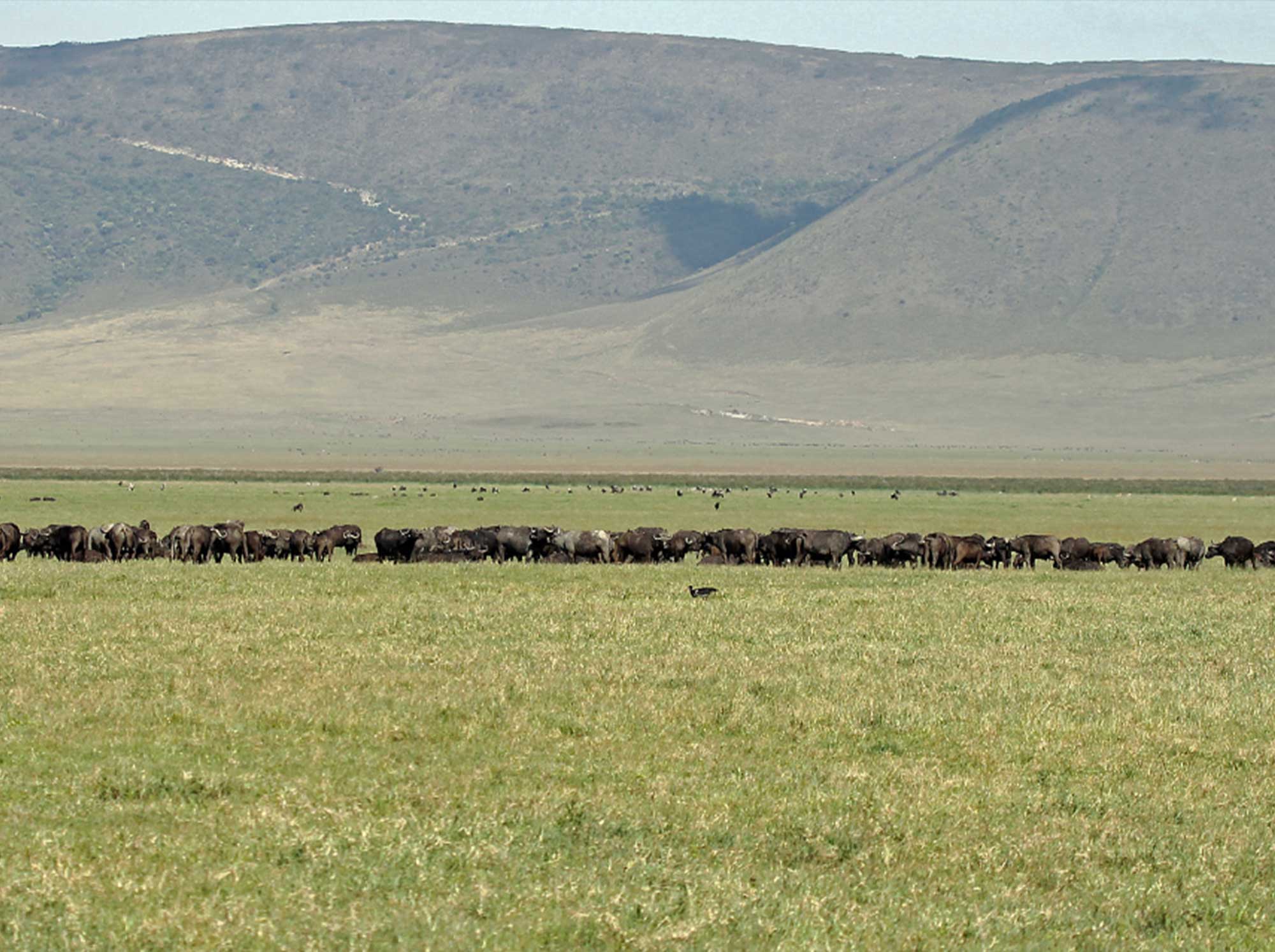Overview
History Ngorongoro
The Ngorongoro Crater, a UNESCO World Heritage site, is a geological marvel and a vital wildlife sanctuary in Tanzania. Formed by a massive volcanic eruption millions of years ago, the crater is often referred to as a “natural enclosure” due to its steep walls that create a unique ecosystem. Originally inhabited by the indigenous Maasai people, the area has a rich cultural heritage intertwined with its natural history. In the mid-20th century, conservation efforts gained momentum, leading to the establishment of the Ngorongoro Conservation Area in 1959, which aimed to balance wildlife protection with the Maasai’s pastoral lifestyle. The Ngorongoro Crater is now recognized for its diverse range of species, including the endangered black rhino, and remains a critical part of global conservation initiatives.
The crater District
Best Time to Visit
The best time to visit the Ngorongoro Crater depends on what you wish to experience:
- June to October: The dry season is ideal for wildlife viewing, as animals are more concentrated around water sources within the crater. This is the best time to see the rich variety of wildlife, including the endangered black rhino and large prides of lions.
- November to May: The wet season sees lush landscapes and vibrant flora, which attract various migratory birds and rejuvenate the environment. While rainfall can be heavier during this period, it also means fewer tourists and a more tranquil experience in the crater.
- December to February: This is a great time to see baby animals, particularly in the surrounding areas, as many species give birth during this period. The landscape is vibrant and teeming with life, providing excellent photographic opportunities.
Uniqueness of Ngorongoro
The Ngorongoro Crater is a unique ecological wonder, renowned for its stunning landscapes and rich wildlife populations. Enclosed within its steep walls, this natural sanctuary spans approximately 100 square miles (260 km²) and supports a remarkable diversity of species, including the Big Five (lions, leopards, elephants, rhinos, and buffalo), as well as cheetahs, hippos, and a variety of bird species. The crater’s diverse habitats, from grasslands to wetlands, create a thriving environment for both resident and migratory wildlife. Its status as a UNESCO World Heritage site highlights its significance as one of the world’s most important conservation areas, providing a glimpse into a well-preserved ecosystem that has remained relatively undisturbed.





Activities in Ngorongoro
- Game Drives: Morning and evening game drives in the Ngorongoro Crater are exceptional for viewing wildlife, especially the Big Five, in their natural habitat.
- Walking Safaris: Guided walking safaris provide a unique opportunity to explore the crater’s diverse flora and fauna up close, led by knowledgeable experts.
- Cultural Tours: Visits to nearby Maasai villages offer rich insights into the traditional lifestyle and customs of the indigenous people, enhancing the cultural experience of your visit.
- Bird Watching: With over 500 bird species recorded, the Ngorongoro Crater is a paradise for bird enthusiasts, featuring everything from flamingos to raptors.
- Photography Tours: Tailored photography safaris led by professional guides help visitors capture stunning images of the crater’s wildlife and breathtaking landscapes.
The Ngorongoro Crater offers an unforgettable experience that immerses visitors in the unique beauty and ecological significance of this remarkable natural wonder.
